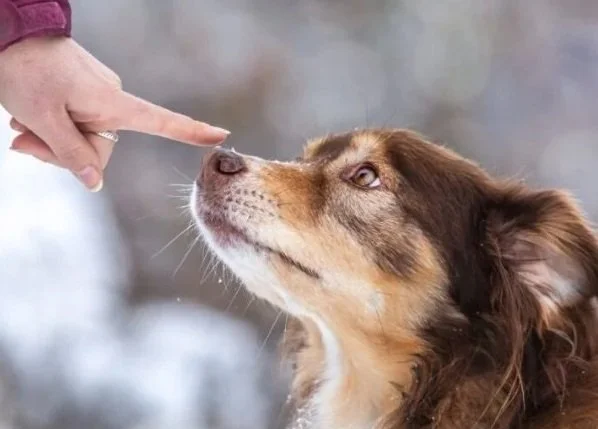I would never use harsh words or raise my voice or hurt a dog whilst training it.
Shouting at them may get them to obey, but it will not build trust, and may even get them to fear you.
But by not disagreeing with an unwanted behaviour, you are actually allowing it. So I let the dog know what I don’t want them to do, as well as what I do want them to do.
Let me tell you about a trainer I know. Her speciality is training puppies, although she can handle older dogs too. She uses no praise that I have ever seen and no rewards. She does play with them but not whilst training. Her rules are simple and must be strictly adhered to. If a pup does not do as it is told, punishment is swift. Sometimes she will grab the pup by the scruff of the neck, or force it to the ground until it submits. Older dogs who have known her since puppyhood, roll over in complete submission when meeting her. This could be mistaken for fear, but it is clear they adore and respect her.
You may be horrified at her methods, but she is a Labrador called Luna, and has had several litters.
It is totally natural for a dog to be corrected. It is a language they understand. Clear and to the point. My company is called Be More Dog for a reason: I come at problems from the dog’s perspective, and I rehabilitate them in a calm assertive way that they find familiar.
I do not like the term ‘positive punishment’. I do not condone punishment. But I do use gentle correction to guide a dog. This could take the form of a touch to the rear, (using 2 fingers which represent the mother dog’s canines), a pop on the lead, or a vocal ‘Uhuh’.
In the words of Cesar Millan, one of the world’s greatest dog trainers,
“Dogs need exercise, discipline, affection. In that order.”
Without discipline, they suffer. Without rules and boundaries, they suffer.
Given only affection, affection, affection, they suffer.
So please do give positive reinforcement, but a little negative reinforcement is healthy too.

